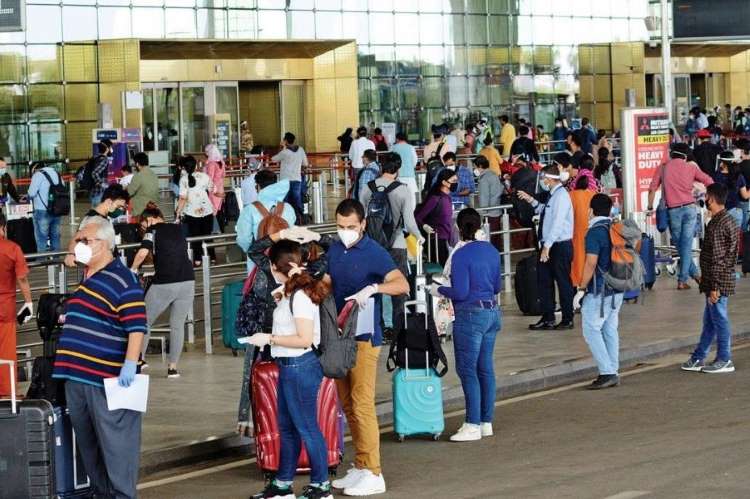Migration from Kerala has a long history, reflected in various surveys and studies over the decades. In 1977 and 1980, the directorate of economics and statistics, government of Kerala, conducted two landmark surveys that estimated 135,000 emigrants in 1977 and 208,000 in 1980, with 186,000 of them in Gulf countries. The first Kerala Migration Survey (KMS) in 1998 estimated that there were 1.4 million emigrants. The latest KMS in 2023, based on a stratified multistage random survey of 20,000 households conducted by the International Institute of Migration and Development and the Gulati Institute of Finance and Taxation revealed that the number of emigrants had risen to 2.2 million.
The number of emigrants increased from 1.4 million in 1998 to 1.8 million in 2003, 2.2 million in 2008, and 2.4 million in 2013. However, it declined to 2.1 million in 2018 before rising again to 2.2 million in 2023. The proportion of female emigrants also saw a notable increase, from 15.8% in 2018 to 19.1% in 2023. When considering both emigrants and return emigrants, the total number of non-resident Keralites is estimated to be 4 million. Additionally, if we include out-migrants to other parts of India, the KMS estimates 500,000 such out-migrants, primarily in Karnataka, Tamil Nadu, and Maharashtra, with Palakkad and Ernakulam districts leading the count.
READ I Can Kerala balance social spending and fiscal goals
Geographic distribution of migration
Geographically, northern districts account for the largest share of emigrants (41.8%), with Tirur Taluk recording the highest number in Kerala, followed by central Kerala (33.35%) and southern Kerala (25%). Among emigrants, there has been a marked shift for female emigrants from GCC countries to Europe and Western countries, accounting for 40.5% compared WITH 14.6% for males. Notably, the educational level of female emigrants is substantially higher than their male counterparts, with 71.5% of female emigrants having completed graduation, compared to only 34.7% of male emigrants.
Religious affiliations also play a significant role in migration patterns. Hindus, who constitute 53.2% of Kerala’s population, accounted for 35.2% of total emigrants, while Christians, comprising 16.9% of the population, accounted for a higher 22.3% of total emigrants. Muslims, who make up 29.3% of the population, contributed the largest share of 41.9% of emigrants, likely due to historical and cultural ties.
Economic impact of migration
India has consistently been the top recipient of emigrant workers’ remittances globally, with $125 billion in 2023 out of an estimated global remittance flow of $669 billion, according to the World Bank. Kerala’s emigrant remittances surged to ₹216,893 crores in 2023 from ₹85,092 crores in 2018, marking a 154.9% increase. These remittances contributed about 23.2% of the state’s domestic product in 2023 and were 1.7 times higher than the state’s revenue receipts.
The estimated per capita remittances for the entire state stood at ₹61,118, compared to ₹224,000 per capita for emigrant households. Notably, Kollam district surpassed Malappuram in household remittances in 2023, with 17.8% of total remittances compared to 16.2% in Malappuram. The utilisation of remittances generally indicated that 15.8% were used for renovating houses or shops, 14.0% to pay off bank loans or debt, and 10% for educational purposes.
Rise of student migration
In recent years, Kerala has seen a significant exodus of students seeking higher education and skill development abroad. According to the KMS report, student emigrants constituted 11.5% of total emigrants from Kerala, increasing from 129,763 in 2018 to 250,000 in 2023. Globally, India and China send the maximum number of student emigrants. In 2023, Indian students abroad were estimated at 1.3 million, revised to over 1.5 million in 2024 by the Ministry of External Affairs. The top destinations for Indian students include the USA, Canada, the UK, Australia, France, Germany, Japan, Spain, the Netherlands, and Argentina, with Germany and Malaysia being popular for their lower emigration costs. Many students without scholarships opt for part-time jobs to cover their expenses.
Despite geopolitical factors, student emigration trends indicate continued growth. Middle and lower-middle-class students are often driven by factors such as financing facilities, the prospects of part-time jobs in host countries, full-time employment opportunities, acquiring fluency in foreign languages, skill development, and the value of international qualifications. However, there is a concern for economically weaker students who cannot afford to emigrate. It is crucial to provide them with quality education domestically, with courses meeting international standards, proper skilling, regular assessments, and effective faculty evaluations by students.
Excessive political intervention in academic affairs should be minimised to maintain objectivity and quality in study programs. It may be desirable to bar students with academic arrears from contesting for positions in academic bodies and to ensure that these bodies function with objectivity and rigor.
Regarding KMS estimates, since around three-fourths of Indian emigrant workers in GCC countries are labour emigrants, their living conditions, working environments, and payments need close monitoring by host governments, Indian embassies, and other stakeholders. This is especially important following recent incidents, such as the tragic fire in a multi-storey labour accommodation building in Kuwait.
With the focus on the welfare of all Kerala emigrants by Non-Resident Keralites organisations and the State Government, it is prudent to avoid statements against individual countries, at least within emigrant welfare forums. This detailed overview of migration trends from Kerala highlights the dynamic nature of emigration and its significant impact on the state’s economy and society.
The author is an economist based in Kochi. He was the head of the Department of Economics, Central University of Kerala, Kasaragod.

